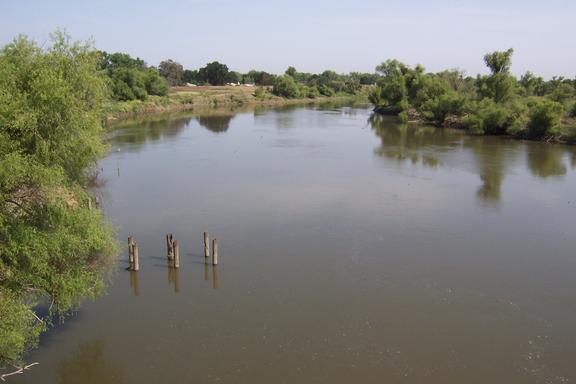There is just no way to know what way the air-quality pendulum will swing for California’s San Joaquin Valley (or simply, “the Valley”) post-COVID-19, well, not at this juncture, anyway.
But, by looking at air-quality trends of the past this could provide a clue.
So, two points of reference: 2005, prior to the onset of the Great Recession and 2014, post-Great Recession recovery.
California’s approximately 24,000-square-mile San Joaquin Valley is home to approximately 11 percent of the state’s 40 million residents or 4.4 million people.
The overarching sentiment among the scientific and healthcare communities seems to be that the COVID-19 crisis will worsen before conditions in this regard see significant improvement. How much worse the Corona Virus pandemic will get before the numbers-curve peaks and a trend-reversal is seen, is the question. In the Valley what’s unclear is to what the crisis extent is as well as how long cases and deaths from the disease persist.
The fact that the Valley suffers from a disproportionately high amount of air pollution doesn’t help matters. In fact, that residents are regularly exposed to polluted air, experts contend, puts Valley residents at much greater risk regarding COVID-19’s effects.
That said, by taking a look at two years – 2005 and 2015 – in terms of the levels of oxides of nitrogen (NOx) and volatile organic compound (VOC) pollution in Valley air that we could get an idea of what could be in store regarding the post-pandemic period, air quality-wise. The season in question is summer while identified sources are: Stationary, Area-wide and Mobile.
Referenced, meanwhile, are Emissions Inventory Tables “Table B-3 Summer Average Nitrogen Oxides (NOx) Emissions Inventory, tons per day” and “Table B-4 Summer Average Volatile Organic Compounds (VOC), tons per day,” in the “2007 Ozone Plan,” Appendix B: Emissions Inventory, from the San Joaquin Valley Unified Air Pollution Control District, published on Apr. 30, 2007.
For year 20051, Valley-based NOx and VOC emissions are as follows:
- Stationary: NOx – 114.5, VOC – 79.8
- Area-Wide: NOx – 11.3, VOC – 140.5
- Mobile: NOx – 504.2, VOC – 178.3
- Total: NOx – 630.0, VOC – 398.6
And, as to year 2015, referenced are Emissions Inventory Tables “Table B-1 Valley NOx Emissions (Summer Daily Averages in Tons per Day)” and “Table B-2 VOC Emissions (Summer Daily Averages in Tons per Day)”. Estimates are for anthropogenic emissions only are those caused by human activity.
For year 20152, Valley-based NOx and VOC emissions are as follows:
- Stationary: NOx – 34.7, VOC – 86.7
- Area-Wide: NOx – 4.8, VOC – 145.7
- Mobile: NOx –232.4, VOC – 83.5
- Total: NOx – 271.9, VOC – 315.9
One would expect there to be differences, of course. But with respect to energy (stationary sources) and transportation (mobile sources) the percent changes for both NOx and VOC for the two years are quite marked.
Taking, on-road (vehicles of the light duty category) as just one example, NOx went from 21.8 tpd (highest of all vehicle classes) in 2005 to 7.1 tpd (not even the highest which was the medium duty trucks category at 7.8 tpd) in 2015 – a difference of -67.4 percent. Why such a big change?
The light duty trucks category saw an even bigger NOx decrease: from 28.9 tpd to 7.1 tpd – a reduction of 21.8 tpd and a difference of -75.4 percent.
Where VOC is concerned the picture looks similar. For the same two categories (light duty vehicles and trucks) in tons per day the amount emitted in 2005 was 31.1 tpd versus 2015’s was 13.0 – a difference of -58.2 percent. As for light duty trucks, here again a quite pronounced reduction: 27.4 tpd in 2005 as opposed to 11.6 tpd in 2015 – a change of -57.7 percent.
So, staying with the light duty vehicle and light duty truck sources categories, could the improvement be because of the cleaner summer fuel blends, a reduction in driving, a combination of the two, or just what? Again, this is for the two pollutants and emitted just during the summer months.
What’s clear is that overall there was air quality improvement NOx and VOC emissions-wise in the San Joaquin Valley in year 2015 relative to year 2005. What remains unclear is what influence weather had on said emissions during each of those two years’ summers.
What is important to note is that based on data from the two aforementioned tables that NOx pollution from mobile sources in the Valley accounts for 80 and 85.5 percent for years 2005 and 2015, respectively.
In terms of drawing any conclusions regarding a post-pandemic Valley where summer ozone pollution – or air-quality trends for that matter – is concerned, at this point, well, that cannot be done with any confidence with just the above information given. But one can take comfort in knowing that, as more information in this regard comes in, the bigger picture over time will become clearer.
Notes
- “2007 Ozone Plan,” Appendix B: Emissions Inventory, San Joaquin Valley Unified Air Pollution Control District, Apr. 30, 2007. Representative URL: http://www.valleyair.org/Air_Quality_Plans/docs/AQ_Ozone_2007_Adopted/19%20Appendix%20B%20April%202007.pdf
- “2016 Plan for the 2008 8-Hour Ozone Standard,” Appendix B: Emissions Inventory, San Joaquin Valley Air Pollution Control District, Jun. 16, 2016. Representative URL: https://www.valleyair.org/Air_Quality_Plans/Ozone-Plan-2016/b.pdf
Image above: United States Geological Survey


